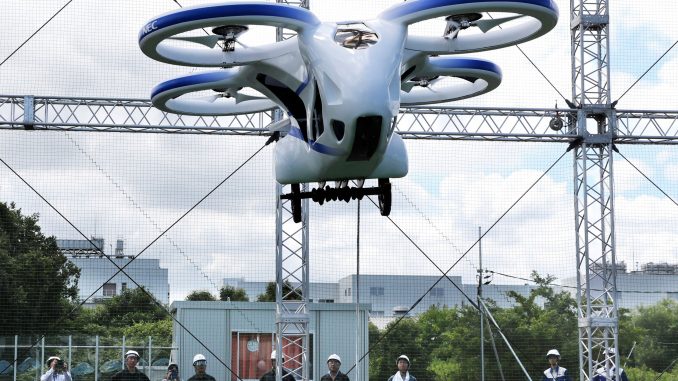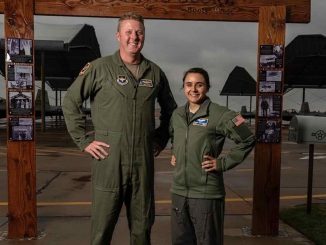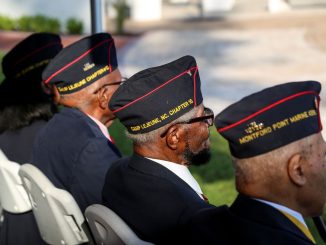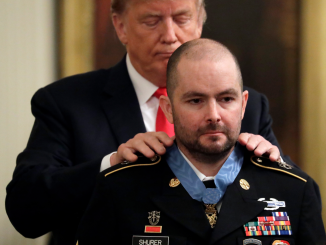

The popular television show “The Jetsons” gave viewers an animated glimpse of a world where flying cars were so common, they were used as family vehicles. Now, the Air Force wants a fleet of its own airborne vehicles by the end of the decade, according to its top technology official.
“We want to have 30 vehicles in the Air Force by 2030,”said Dr. Will Roper, assistant secretary of the Air Force for acquisition, technology and logistics, told reporters during a video call Wednesday. “There are multiple companies that can do that.”
Once the military proves the safety of these “flying cars” — part of an initiative known as Agility Prime — the domestic market stands to benefit as well, he said.
The Air Force kicked off the launch for Agility Prime via a virtual conference focused on the development of flying cars for both the Pentagon and everyday citizens.
Related: Air Force Takes First Step Toward Adding Flying Cars to Its Aircraft Inventory
The goal of the conference was to outline “the strategic imperative to innovate through collaboration with investors, industry, and interagency partners,” for the use of the airborne vehicles, according to the service.
Roper on Wednesday said Agility Prime would not just focus on one vehicle design — some vehicles tested will be larger for cargo, others smaller and solely for moving people.
“Most of the vendors have a plan to have a pilot as well as autonomous operations,” he added.
“Since we have put our hand up and said, ‘We want to accelerate this market so that it’s dual-use, the military wants to buy the exact same vehicle that would be available domestically,’ companies have shared with us privately that they have seen the amount of investment given by venture capitalists go up,” Roper said. “And they expect that that will continue the further we go through the door on competition.”
The Air Force plans to request funding for flying car research in the fiscal 2022 budget request, in addition to the research funding the service already set aside for the experiment, he said.
While the military demand for flying vehicles would be smaller than that of the commercial market, Agility Prime represents an opportunity for the Defense Department to be a testbed, jumpstarting the initiative and also driving costs down, Roper said.
“We’re a great bridge market to not just get companies flight hours and build competence, but to be regulators, certifiers of all types for local and state governments,” he said. “And to also let companies start getting production scale up.”
Based on the interest from the virtual online conference, Roper predicted that “quite a few companies can compete very successfully.”
The Air Force in February made the first move to add non-traditional “flying car”-type aircraft into its inventory through a request seeking prototypes that include “emerging electric Vertical Takeoff and Landing technologies (eVTOL) and urban/advanced air mobility (UAM/AAM) aircraft.
The solicitation follows years of interest from the U.S. military, which is already eyeing a replacement for the V-22 Osprey tiltrotor aircraft in the role of battlefield transport and resupply.
The recent program solicitation under the Air Force Research Lab at Wright-Patterson Air Force Base, Ohio, requests that as these systems mature toward certified commercial operations, “the government will identify opportunities for early adoption, with the potential for procurement and fielding in the next three years.”
Officials at Air Force Materiel Command refer to the vehicles as “ORBs,” or organic resupply buses.
ORBs are not necessarily “drones, cars, helicopters, trucks, airplanes, motorcycles, or SUVs, but might support similar missions,” or encompass a mix of these roles, the notice states.
“Given their flexibility, an ORB could act as an organic resupply bus for disaster relief teams, an operational readiness bus for improved aircraft availability, and an open requirements bus for a growing diversity of missions,” according to the notice.
Additionally, moving quickly through the acquisition process is an underlying objective, Roper said.
“Examples like the Agility Prime [program] could be everywhere in future,” Roper said Wednesday. “They need to be everywhere in the future, as long as emerging markets are commercially oriented.”
“It will help make the US. government, particularly the Air Force and Space Force, better partners in commercial innovation,” he added.
— Oriana Pawlyk can be reached at oriana.pawlyk@military.com. Follow her on Twitter at @Oriana0214.
Read More: Dozens of Marine Recruits at Boot Camp in San Diego Have COVID-19
© Copyright 2020 Military.com. All rights reserved. This material may not be published, broadcast, rewritten or redistributed.






Be the first to comment